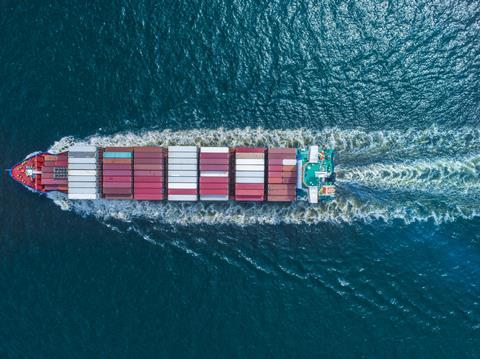
Business conditions for the global logistics and transport sector will worsen in 2025 as the Red Sea disruption continues to affect global trade.
This is according to a new Moody’s outlook report, which forecasts a 7% drop in aggregate EBITDA for the global sector, mainly driven by a large decrease for container shipping companies.
This will see the business landscape for container shipping companies “worsen”, the report said, due to a combination of fleet growth as well as the continued effects of the major disruption seen in the Red Sea over the past year.
Shipping companies excluded, the outlook for global logistics and transport next year “remains stable”, Moody’s analysts said.
“China, which is an important driver of trade growth both for trade between Asian countries and for exports out of Asia, is showing signs of a broad-based slowdown. However, the export of goods to the US, EU and UK is continuing to recover from 2023 lows and even more so to other Asian countries.”
Nevertheless, “heightened geopolitical risk and increasing protectionism could weigh on overall sector performance”, the report warned.
Read more: Concerns mount over shortages of Asian goods due to Red Sea conflict
”Even though we expect the world economy will continue to grow in 2025, underpinning the global trade on which the transport and logistics industry depends, the sector still faces plenty of risks.”
Those risks include unexpected geopolitical events like the Ukraine war and the Israel-Hamas conflict, as well as potential trade tension between China and the US and EU.

The vulnerability of the global container shipping market was evident following the disruption caused by Yemeni rebels in the crucial Red Sea trade channel, which forced companies to reroute shipments from Asia to Europe and the US around the Cape of Good Hope in Africa, adding an average of 10 days to deliveries and bumping operational costs massively.
It also caused concerns that Christmas deliveries could be under threat as retailers scrambled to place early orders and find alternative routes.
Further disruptions in the Panama Canal, which is going through record levels of drought – therefore forcing authorities to reduce the number of ships allowed to use it – have also driven up freight costs and sent shockwaves through the global economy.
By mid-2024, the Shanghai Containerized Freight Index (SCFI) had more than doubled compared to late 2023. According to 18 October data, the SCFI was down 45% from its 2024 high and 60% below its record level during Covid.
However, it remained 115% above the pre-pandemic average and more than double the 2023 average.
Read more: Global trade slows down as Red Sea crisis continues to bite
Increased shipping distances and fuel consumption as well as higher insurance premiums have all contributed to heightened cost pressures and a turbulent global trade market.
On the other hand, freight forwarding and general logistics are experiencing a recovery from 2023 lows. Moody’s predicts steady growth in volumes through next year as consumers and businesses alike emerge from the worst of the economic crisis.
The overall third-party logistics market profitability is therefore expected to grow in 2025.



















No comments yet